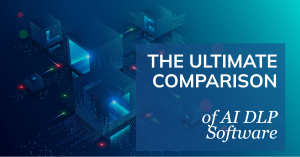In the evolving landscape of cybersecurity, AI-enhanced firewall solutions have emerged as a formidable defence mechanism. Traditional firewalls, though efficacious to a degree, often struggle against sophisticated cyber threats. By integrating artificial intelligence, firewalls offer unprecedented security, adaptability, and efficiency. This ultimate guide to AI-enhanced firewall solutions delves into AI-enhanced firewalls’ essence, benefits, functionalities, and implementation strategies.
1. Understanding AI-Enhanced Firewall Solutions
AI-enhanced firewall solutions leverage artificial intelligence and machine learning to bolster traditional firewall capabilities. Unlike conventional firewalls, which rely on predefined rules and signature-based detection, AI-enhanced firewalls can analyze vast amounts of data in real time, identify patterns, and predict potential threats.
These solutions employ deep learning algorithms to understand and adapt to emerging threats, providing a dynamic defence mechanism that evolves with the cyber landscape. This adaptability is crucial as cyber attackers constantly develop new methods to bypass traditional security measures.
2. Key Benefits of AI-Enhanced Firewalls
The incorporation of AI in firewalls brings several notable advantages:
a. Real-Time Threat Detection and Response: AI-enhanced firewalls can detect anomalies and threats as they happen, significantly reducing the response time. This real-time capability ensures that threats are mitigated before they can cause substantial damage.
b. Improved Accuracy and Reduced False Positives: Traditional firewalls often generate false positives, causing unnecessary alerts and diverting attention from actual threats. AI-driven cybersecurity solutions enhance accuracy by learning from historical data and improving their threat detection algorithms.
c. Adaptability to New Threats: AI’s learning capability enables firewalls to adapt to new and unknown threats. This proactive approach is critical in countering zero-day vulnerabilities and other advanced persistent threats.
d. Automated Policy Management: Managing firewall policies can be complex and time-consuming. AI can automate policy adjustments based on real-time threat intelligence, ensuring optimal protection without constant manual intervention.
e. Enhanced Data Analysis: AI-enhanced firewalls can analyze vast amounts of data from various sources, providing comprehensive insights into network traffic and potential vulnerabilities.
3. Core Functionalities of AI-Enhanced Firewalls
AI-enhanced firewalls integrate several advanced functionalities to provide robust security:
a. Behavior Analysis: AI can identify deviations from standard patterns by analysing user and system behaviour and flagging potential threats. This behaviour-based detection is crucial for identifying insider threats and sophisticated external attacks.
b. Threat Intelligence Integration: AI-enhanced firewalls can integrate global threat intelligence feeds, updating their threat database in real time. This integration ensures the firewall is always equipped with the latest information on emerging threats.
c. Anomaly Detection: Advanced algorithms detect anomalies in network traffic that may indicate a security breach. This capability allows for the early detection of sophisticated threats that traditional firewalls might miss.
d. Deep Packet Inspection (DPI): DPI involves examining a packet’s data part (and possibly the header) as it passes an inspection point. AI enhances DPI by rapidly analyzing large volumes of data to detect malicious payloads and unusual traffic patterns.
e. User and Entity Behavior Analytics (UEBA): UEBA uses AI to analyze the behaviour of users and entities within the network. By establishing a baseline of normal behaviour, the firewall can detect anomalies that may indicate compromised accounts or insider threats.
4. Implementing AI-Enhanced Firewall Solutions
The implementation of AI-enhanced firewall solutions requires careful planning and execution. Here are some critical steps to consider:
a. Assessing Current Security Posture: Evaluating the current security infrastructure is essential before integrating AI. Identify existing gaps and determine how AI can address these vulnerabilities.
b. Selecting the Right Solution: Choose an AI-enhanced firewall solution that aligns with your organization’s needs. Consider factors such as scalability, integration capabilities, and the level of automation provided.
c. Integration with Existing Systems: Ensure the AI-enhanced firewall seamlessly integrates with your security systems and infrastructure. This integration is crucial for maintaining a cohesive security strategy.
d. Training and Fine-Tuning: AI systems require training on historical data to optimize their performance. Continuously fine-tune the algorithms to improve accuracy and adapt to evolving threats.
e. Monitoring and Maintenance: Regularly monitor the performance of the AI-enhanced firewall and update it with the latest threat intelligence. Periodic maintenance ensures that the system remains effective and efficient.
5. Challenges and Considerations
While AI-powered firewall solutions offer numerous benefits, there are challenges and considerations to keep in mind:
a. Data Privacy Concerns: AI involves collecting and analysing vast amounts of data, raising potential privacy concerns. Ensure that the implementation complies with data protection regulations and best practices.
b. Complexity and Cost: AI-enhanced firewalls can be complex and involve significant costs. Weigh the benefits against the investment required to ensure a favourable return on investment.
c. Skill Gap: Implementing and managing AI-powered firewalls requires specialized skills. Invest in training and development programs to equip your IT staff with expertise.
d. False Positives and Negatives: Despite advancements, AI systems are not infallible and may still generate false positives or overlook specific threats. Continuous monitoring and fine-tuning are essential to minimize these issues.
e. Ethical Considerations: The deployment of AI in cybersecurity raises ethical questions, particularly regarding decision-making and accountability. Establish clear guidelines and ethical standards for using AI in security operations.
6. Future Trends in AI-Enhanced Firewall Solutions
The future of cybersecurity is poised to be significantly influenced by AI advancements. Here are some anticipated trends:
a. Increased Automation: As AI technology matures, we can expect more excellent threat detection and response automation, reducing reliance on human intervention and allowing security teams to focus on strategic tasks.
b. Enhanced Predictive Capabilities: AI’s predictive capabilities will continue to improve, enabling firewalls to anticipate and neutralize threats before they materialize. This proactive approach will be crucial in maintaining robust security.
c. Integration with IoT Security: With the proliferation of IoT devices, AI-enhanced firewalls will play a vital role in securing these endpoints. Analyzing and protecting a diverse range of devices will be a significant advancement.
d. Collaborative Defense Systems: AI will enable the development of collaborative defence systems, in which multiple firewalls and security systems share threat intelligence in real-time, creating a unified defence network.
e. Continuous Learning and Adaptation: AI-enhanced firewalls will become increasingly adept at continuous learning, adapting to new threats in real time without requiring manual updates.
7. Case Studies: Successful Implementation of AI-Enhanced Firewalls
Keyword: AI in network security
Several organizations have successfully implemented AI in network security, demonstrating the efficacy of AI-enhanced firewalls. Here are a few notable examples:
a. Financial Institutions: A significant bank implemented an AI-enhanced firewall to protect its vast network of ATMs and online banking services. The AI system’s ability to detect and respond to fraud attempts in real time significantly reduced financial losses and improved customer trust.
b. Healthcare Sector: A leading healthcare provider has adopted an AI-powered firewall to secure patient data and medical devices. The AI system’s real-time threat detection and automated policy management ensured compliance with strict healthcare regulations.
c. E-commerce Platforms: An e-commerce giant utilized AI-enhanced firewalls to protect its online platforms from cyberattacks during peak shopping seasons. The AI system’s scalability and adaptability ensured uninterrupted service and safeguarded customer data.
8. Conclusion: The Ultimate Guide to AI-Enhanced Firewall Solutions
AI-enhanced firewall solutions represent the pinnacle of modern cybersecurity, offering a dynamic, adaptive, and robust defence against the ever-evolving threat landscape. By leveraging artificial intelligence, these firewalls provide real-time threat detection, improved accuracy, and automated policy management, making them indispensable for organizations seeking to enhance their security posture.
As the future of cybersecurity continues to evolve, the integration of AI in network security will become increasingly prevalent. Organizations must stay ahead of the curve by adopting AI-enhanced firewall solutions and continuously adapting to new threats. The benefits of AI in cybersecurity are undeniable, and its potential to revolutionize the field is immense.
In conclusion, AI-enhanced firewall solutions are a technological advancement and a necessary evolution in the battle against cyber threats. Organizations can effectively safeguard their networks and data by understanding their functionalities, benefits, and implementation strategies, ensuring a secure digital future.
If you want the ultimate guide to AI-enhanced firewall solutions, go here to learn everything you need to know.
9. Additional Resources
For those looking to delve deeper into the subject of AI-enhanced firewalls and related technologies, here are some recommended resources:
a. Books:
- “Artificial Intelligence in Cybersecurity: Concepts, Technologies, and Applications” by Derek Parker.
- “Machine Learning for Cybersecurity: A Comprehensive Guide” by Richard Hurley.
b. Websites:
c. Online Courses:
- “AI for Cybersecurity” on Coursera
- “Machine Learning in Network Security” on Udemy
d. Research Papers:
- “AI and Machine Learning in Cybersecurity” published by IEEE.
- “Adaptive Security Mechanisms Using Artificial Intelligence” available on SpringerLink.
By leveraging these resources, organizations and individuals can better understand AI-enhanced firewall solutions and stay updated with cybersecurity advancements.
Some links in this article may be affiliate links, meaning they could generate compensation to us without any additional cost to you should you choose to purchase a paid plan. These are products we have personally used and confidently endorse. It’s important to note that this website does not offer financial advice. You can review our affiliate disclosure in our privacy policy for more information.




